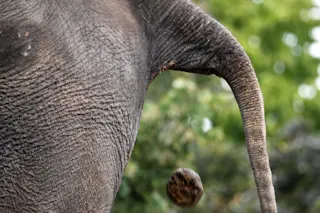(Credit: Bernhard Richter/Shutterstock)If the above image disturbs you, move along; this post is not for you! In this study, published this week in the journal Soft Matter (yes, seriously), scientists from the Georgia Institute of Technology report their detailed studies of the pooping habits of a wide variety of mammals. Using video recordings of the fecal extrusions and measuring the resulting turds, they deduce that “Despite the length of rectum ranging from 4 to 40 cm, mammals from cats to elephants defecate within a nearly constant duration of 12 ± 7 seconds (N=23). We rationalize this surprising trend by the model, which shows that feces slide along the large intestine by a layer of mucus, similar to a sled sliding through a chute. Larger animals have not only more feces but also thicker mucus layers, which facilitate their ejection.” If you are interested in pooping, be sure to check out ...
All Mammals Take About 12 Seconds to Poop
Explore the fascinating defecation of mammals, revealing surprising similarities in pooping habits across species.
More on Discover
Stay Curious
SubscribeTo The Magazine
Save up to 40% off the cover price when you subscribe to Discover magazine.
Subscribe













